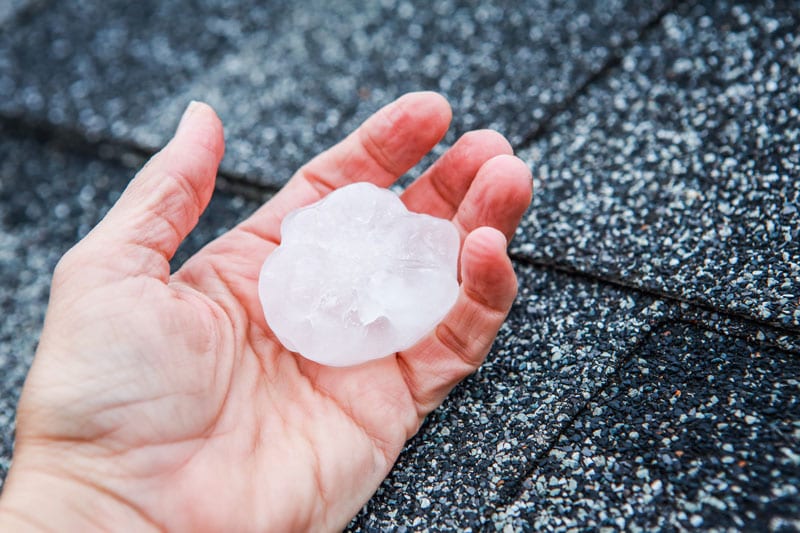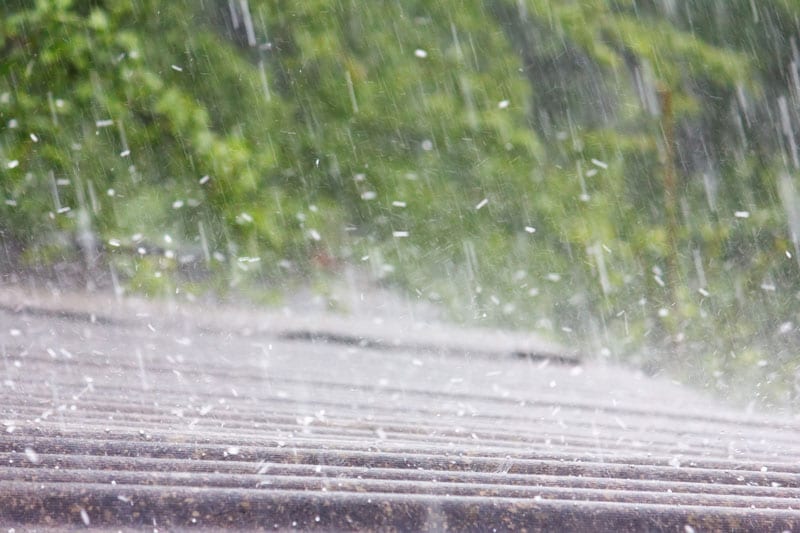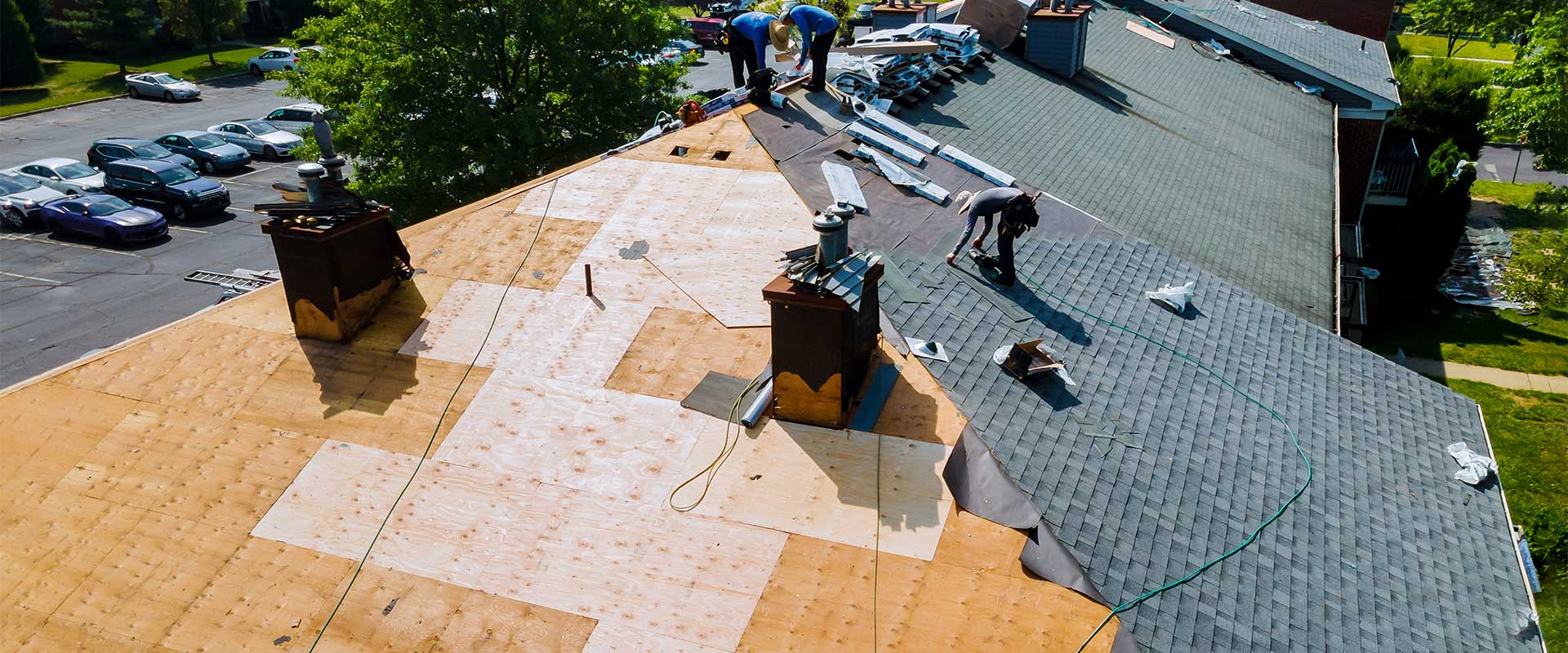How the Insurance Claims Process Works (And Sometimes Doesn’t Work)
How it’s frequently possible to get your insurance company to pay much more than you or they expected.
It’s bad enough when you have a hail storm or the famous Colorado winds blow through your town and damage your property, but that’s just the start: afterwards, you face a long and urgent process of getting your property back to the way it was.
It’s unfortunate when nature drops this mess into your lap. But there’s a hard way to deal with the problem…and an easier way.
The hard way involves lots of your time, to:
- temporarily make your property safe for inhabiting (with tarps, boarding up, or other temporary fixes)
- find and screen multiple subcontractors
- deal with your insurance company
- deal with your mortgage company
- possibly deal with city workers and utilities
- Oh yes, and also carry on with the full-time life that you had before the disaster.
In this whole mess, your insurance company plays a central role: after all, they’re the ones who can write a check to get the ball rolling to fix your property.
Here’s the problem: Your insurance company likes to collect your insurance premiums, but when it comes time to pay for some disaster you’ve experienced—the less they pay out, the bigger their profits.
Insurance is a numbers game: collect as much in premiums as possible, and pay out as little in claims as possible.
That may be OK, if the deck were not stacked against you.
But it is.
How? Because the insurance company is expert at being able to assess damage and process claims—and you’re not. That means that you’re in the vulnerable position of having to take their word for how much money to pay you…
…Unless you have Northern Lights Exteriors in your corner.
When you have a restoration project after a hail storm, wind storm, or other natural disaster, we become a partner to help you get the largest-possible check from your insurance company.
We have people on our staff who have been trained in the insurance-claims process. We have the same software that the insurance companies use to create their insurance claims, and we speak the same language about what needs fixing.
The big difference is that we are looking out for you, working to get you a bigger check.
Here’s what happens after a major storm
As you know, when a big storm hits Colorado, a great deal of damage can happen, and fast. For example, a hail storm might drop golfball-size hail in a matter of minutes on hundreds of homes and businesses in a town. Suddenly, all those hundreds of homeowners need roof repairs at the same time.
Here’s what then happens:
- All the local contractors get flooded with calls
- News of the storm spreads rapidly across the country, given the 24-hour weather channels on TV and the internet.
- Within a few days, contractors descend on Colorado from neighboring states and even from across the country, and start knocking on doors. After all, it’s easy to see who got hit.
Meanwhile, the insurance companies that insured these damaged properties become overwhelmed. They have people on staff called “insurance adjusters.” It’s a weird term, because exactly what are they adjusting? Anyway, their job is to visit a property as soon as possible, assess the damage quickly, determine if the insurance company is liable for any of those damages, and write up a claim, or report. Their goal is to offer as little as possible, while getting a signature from the homeowner to agree to that claim amount as final settlement of the damage.
Here’s the first problem:
Sometimes those companies are so overwhelmed, they hire freelance Denver insurance adjusters from other states to come and help with the crush of cases they need to work through. Those freelancers might be great, or they may not be familiar with all the building codes in Colorado, never mind the specific codes and practices that the building inspector mandates in your particular town.
For example, an adjuster who is not familiar with the building code in Longmont, CO might write up a repair estimate for a common type of roofing shingle called “3-tab”. What the adjuster might not know is that Longmont has a 3-tab Rule: If you have more than 100 square feet of damage on the roof that uses 3-tab shingles, you must replace the entire roof. Just that one piece of knowledge alone could increase the insurance claim by many thousands of dollars, resulting in the homeowner getting a brand-new roof, instead of a patched roof with colors that now don’t match.
Because you likely won’t know how knowledgeable and experienced the adjuster is who visits your property, we have a simple recommendation: no matter how smooth or confident the insurance adjuster is, you should always get a second opinion. Always. Do not be pressured into signing on the spot.
Be on guard for the second problem:
Sad but true: some shady insurance adjusters will try to talk homeowners out of filing a claim in the first place. They’ll say stuff like: “Well, okaaay, if you want, you can file a claim…but maybe you should think twice about that. What if your insurance premium goes up?”
What they don’t say—and what most homeowners don’t know—is that property insurance is not like car insurance. If you’re a bad driver and you cause an accident, your rates will go up. In contrast, natural disasters are considered “Acts of God.” The insurance companies can’t blame you for something that happened to your whole zip code. So don’t fall for that trick.
Here’s yet another game some companies play:
Sometimes contractors will present you with a low-ball offer, in order to get your business. What they don’t tell you is they are not including all the materials and labor to bring the property up to the current building code. That’s why they can bid so low. And they’ll do the work without going to city hall to get a construction permit. They know that if they took out (“pulled”) the permit, then the city would send out an inspector at the end of the job. The inspector most likely would not approve the low-ball work because it was not up to code, so the contractor never pulls that permit in the first place.
You should always insist on having the contractor pull the permits, and on having in writing that the job will include everything necessary to bring that part of the property up to code.
Never let this happen to you!
Denver insurance companies typically will not write one big check for major damage, but will pay out a claim over multiple checks. Some dishonest contractors will tell you that they need to have the first check from the insurance company signed over to them, so they can buy materials for the job, and “secure your place in line.” It sounds plausible. Don’t do it: the scary truth is some contractors collect several insurance checks like this after a storm…and then they disappear. Their phone is disconnected and they may have left the state.
It gets worse: the insurance company won’t eat that expense and won’t send you a replacement check. They paid you once and that was their only obligation. Oh sure you can file a grievance with your state office of consumer affairs. And wait. And wait. While you now don’t have the money to fix your property.
Northern Lights Exteriors has a better approach: we don’t ask for a penny until a substantial piece of the work is done. You’ve been through enough, and we think this is the right way to do business.
You need someone in your corner, negotiating for you
One option is for you to Google the term “public adjusters.” They are people with the same skills as the insurance-company adjusters, but the difference is they work for you. Pardon the language, but you need a bad-ass working for you, who knows all the tricks and games, and who will get the largest claim check that is lawfully available from the insurance company.
You have another good option besides hiring a public adjuster to represent you with the insurance companies: we can do the same thing, and we do it all the time. We have people who are trained in the same claims process as insurance adjusters. The only difference is our people are compensated not by how little the insurance company pays out, but by how much additional money the insurance company pays out to you. Maybe best of all, you don’t need to pay anything extra for this service.
You may wonder: “If this service is so valuable, why is Northern Lights offering it for free?” The answer is simple: We know that you have hundreds of companies to choose from when you’re considering exterior work to your property. We have these trained people on staff in order to go the extra mile for you and win your business. It’s true that a larger claim may mean more business for us doing the repairs, but it’s important to understand that you are not obligated to use us to do the repairs.
Please note:
We’re not guaranteeing the sort of results you see above, because insurance adjusters differ greatly. Some of them are highly experienced and competent, and they produce claim estimates that are accurate. Others, not so much.
Before you have major surgery in a hospital, it’s always a good policy to get a second opinion. Before your property gets major surgery, we think it’s prudent for you also to get a second opinion. We’d be happy to provide that service to you. Just call us at 303-776-5263.
Some of the situations we’ve dealt with, and how we “go to bat” for homeowners
EVANS, COLORADO

The house was rectangular, with two long sides and two short sides. The adjuster told the homeowner that the insurance company would replace the siding on one of the short sides of the house, and that the old siding on that short side could be removed and used to repair the siding on the long side of the house. The homeowner wanted our opinion.
We inspected the property and concluded that this proposal would not be in the best interest of the homeowner: first of all, the siding was 20 years old, and was no longer even available for purchase. Therefore the colors would not match. The new “short side” of the house would not match the repaired longer side.
The adjuster and insurance company agreed with our assessment, and paid to have the entire house covered in new siding.
WINDSOR, COLORADO

This case involved a police officer who was also a single mom. After hail damaged her house, she was given a claim offer by the Denver insurance company. She had been sitting on the offer, because it was only for one window, a sliding-glass door, and a few small things on the roof like vents. It seemed like the claim didn’t square with the damage she could see with her own eyes.
She called us and we did our own inspection (it costs nothing, by the way). We determined that two other windows had been damaged, as well as the siding on two sides of the house. In addition, we concluded that the roof needed to be replaced–it was shot.
We worked with the insurance company, which eventually agreed with our assessment and rewrote its claim.
DOLLARS-AND-CENTS…

Here are some dollars-and-cents examples:
The above are just two examples of how the process works. Below are several more cases, and specifically what we were able to achieve in dollar terms for homeowners:
Longmont, CO: We got an additional $8,767.92 for the homeowner
The original insurance estimate was for $17,000 for roofing and gutters. After we reviewed the damage, we pointed out where the estimate was deficient.
We got the estimate to be re-written for correct market costs and additional components required by the local municipal code. The final claim amount was $25,767.92. We increased the insurance claim by 51.6%
Lafayette, CO: We got an additional $11,102.00 for the homeowner
The original insurance estimate was for $22,197 for roofing and gutters. We negotiated with the insurance company for realistic market costs and for additional materials that were required, based on city rules.
The check to the homeowner was for $33,299 instead of $22,197. That’s an additional $11,102.00 or 50.0%
Boulder, CO: We got an additional $166,977.01 for the homeowner
The original insurance estimate was for $74,852. The homeowner called us in and we had multiple meetings with the insurance company’s adjuster. The insurance company eventually agreed that there was substantial additional damage to many windows.
The check to the homeowner was for $241,829.01 instead of $74,852. That’s an additional $166,977.01, or a 223.1% increase.
Brighton, CO: We got an additional $8,552.06 for the homeowner
The original estimate was for $12,055.94. After our inspection, we pointed out the correct market costs and additional components required per the Brighton municipal code.
The check to the homeowner was for $20,608.00 instead of $12.055.94. That’s an additional $8,552,06, or a 70.9% increase.
Frederick, CO: We got an additional $8,745.00 for the homeowner
The original estimate was for $5,794. Again it was a matter of looking very closely at the damage, the building code requirements, and what it would cost to repair the property.
The check to the homeowner was for $14,719 instead of $5,794.00. That’s an additional $8,745.00, or a 146.4% increase.
Louisville, CO: We got an additional $41,173.64 for the homeowner
The original estimate was for $15,615. We discussed with the insurance adjuster the damage we found. Given the realistic costs we identified and the window damage that wasn’t added to the original report, we got the adjuster to re-write the claim.
The check to the homeowner was for $56,788.64 instead of $15,615. That’s an additional $41,173.64, or a 263.7% increase.



